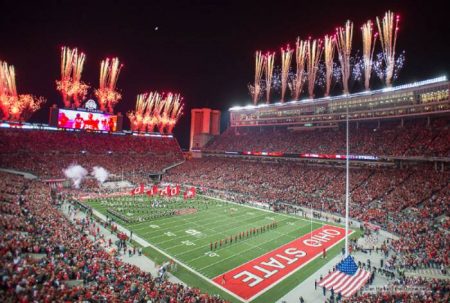
Three Stars That Define Us. Three Stars That Unite Us: An Ode to the Volunteer State
Tennessee, often referred to as the Volunteer State, is a land rich in history, culture, and pride. From the rolling hills of the Great Smoky Mountains to the vibrant streets of Nashville, the Volunteer State has woven a fabric of diverse identities, untold stories, and shared values. Yet, amidst all the complexity and beauty, three stars stand tall and shine brightest—a symbol of Tennessee’s unity, strength, and resilience. These stars are not merely a part of the state’s flag; they represent what makes Tennessee great: its people, its heritage, and the unwavering spirit that binds the state together.
This ode to the Volunteer State seeks to explore the significance of the three stars on Tennessee’s state flag, the symbolism behind them, and how they represent the collective identity of Tennesseans. From the mountains to the cities, from the bustling music scene to the football field, the three stars are a constant reminder of the shared purpose and pride that define Tennessee and unite its citizens.
The History of the Three Stars
Before delving into the symbolic meaning of the three stars, it’s essential to understand their historical context. The three stars on Tennessee’s state flag have been part of the state’s identity since 1897, when the flag was adopted. The design was created by the famed designer and artist, Colonel LeRoy Reeves, a member of the Tennessee National Guard.
The stars on the flag represent three distinct regions of the state: East Tennessee, Middle Tennessee, and West Tennessee. These regions were historically and geographically distinct, with their own unique cultures, traditions, and identities. The three stars symbolize the union of these areas, reflecting the diversity that makes Tennessee a truly special state.
During the Civil War, Tennessee was the last state to secede from the Union, and the first to rejoin after the war. The stars on the flag serve as a reminder of the challenges the state faced during this tumultuous period and the unity it ultimately achieved despite the divisions that once existed. The three stars stand not only for the state’s three distinct regions but also for the unification of these regions into one cohesive, strong entity—Tennessee.
As time has passed, the stars have taken on new layers of meaning. They no longer simply represent geographic divisions but now stand as symbols of Tennessee’s spirit, its struggles, and its triumphs. Whether you’re from the hills of the Smoky Mountains or the flatlands of the Mississippi River, the three stars unite Tennesseans in a way that transcends geographic boundaries.
The Meaning of the Stars
The three stars on the Tennessee state flag are much more than a simple geometric design. Each star carries with it deep meaning and reflects the qualities that define the Volunteer State.
East Tennessee: The Heart of the Mountains
East Tennessee, home to the Great Smoky Mountains and the iconic Appalachian Trail, is often seen as the heart of the state. It’s a region of rugged landscapes, deep history, and an unwavering sense of community. East Tennessee is known for its outdoor beauty—majestic mountains, pristine forests, and sparkling rivers that invite adventure and reflection. Yet, beyond its natural wonders, the people of East Tennessee embody a spirit of resilience, independence, and pride.
The first star on the flag represents East Tennessee, a region with a rich cultural heritage, strong Appalachian roots, and a profound connection to the land. East Tennesseans have long been known for their self-reliance, and it was from this region that many Tennesseans volunteered during the Civil War, leading to the state’s nickname: “The Volunteer State.” The rugged terrain of East Tennessee served as both a challenge and a source of strength for its people, shaping a population that is fiercely proud of its heritage.
The mountainous terrain of East Tennessee has shaped not only the way people live but also the way they think. From the small towns that dot the landscape to the bustling city of Knoxville, East Tennessee is a region that has learned to persevere through adversity. The people of East Tennessee have a deep connection to their past, a deep love for their land, and an unshakable belief in the strength of their community.
East Tennessee’s contribution to the state’s identity cannot be overstated. From the Appalachian folk music that shaped country and bluegrass to the rich storytelling traditions that have shaped Tennessee’s literary culture, East Tennessee has left an indelible mark on the state’s cultural landscape. The first star on the flag represents this legacy—one of enduring strength, resilience, and a deep connection to the land.
Middle Tennessee: The Soul of the State
Middle Tennessee, often considered the cultural and political heart of the state, is home to the capital city of Nashville, which is synonymous with the music industry, Southern hospitality, and the arts. The second star on the flag represents Middle Tennessee, a region of innovation, creativity, and diversity.
Nashville, the largest city in the state, is known as “Music City” for its unrivaled role in shaping the country, blues, and rock genres. The music scene here is legendary—people from all over the world flock to Nashville to experience its unique blend of musical history and contemporary creativity. From the Grand Ole Opry to the Ryman Auditorium, Nashville has hosted some of the most iconic musical moments in history. The region’s cultural contributions, not just in music but also in arts, theater, and cuisine, have made Middle Tennessee a focal point of Tennessee’s identity.
Middle Tennessee is also known for its historical significance. It was here that the Civil War’s Battle of Nashville took place, an event that shaped the state’s future. The city of Nashville itself has served as the state’s capital since Tennessee’s early days, cementing its role as the political and administrative center of the state. Middle Tennessee’s contributions to the state’s development, both culturally and politically, make it an essential part of the identity of Tennessee.
The second star represents the creative and cultural hub of Tennessee. Middle Tennessee has become synonymous with growth, opportunity, and the fusion of tradition and innovation. The people of Middle Tennessee are proud of their musical heritage, their thriving economy, and their commitment to progress. The second star serves as a reminder of Tennessee’s ability to balance its rich traditions with its forward-looking spirit.
West Tennessee: The Power of the Mississippi
West Tennessee, the region defined by the Mississippi River, is a land of agriculture, industry, and cultural exchange. The third star on the flag represents this vital region, which has shaped Tennessee’s economy, culture, and identity. The Mississippi River has served as a lifeline for commerce, transportation, and trade for centuries, shaping the history of the region.
Memphis, the largest city in West Tennessee, is known as the birthplace of blues music and is home to one of the most iconic figures in American history—Elvis Presley. Memphis has a rich history in music, from the legendary Sun Studio to Beale Street, a vibrant district that continues to celebrate the legacy of jazz, blues, and soul music. The city’s role as a cultural epicenter has made it a vital part of Tennessee’s identity.
West Tennessee is also home to a thriving agricultural economy, with cotton, soybeans, and rice being staples of the region’s agricultural output. The fertile soil of West Tennessee has sustained generations of farmers and has been a driving force in the state’s economic growth. The region’s connection to the Mississippi River has made it a key point of trade and industry, shaping Tennessee’s role in the broader American economy.
The third star on the flag represents the region’s importance in shaping Tennessee’s identity. West Tennessee is known for its cultural vibrancy, economic contributions, and historical significance. Whether it’s the power of the Mississippi River or the rhythm of the blues, West Tennessee has made an indelible mark on the state’s culture and history.
The Unity of the Three Stars
While each of Tennessee’s regions is distinct in its own right, it is the unity of these three stars that truly defines the Volunteer State. The three stars on the flag are a reminder that, despite their differences, the people of East Tennessee, Middle Tennessee, and West Tennessee share a deep connection—a bond forged through shared history, mutual respect, and a collective identity.
Tennessee’s people may have different backgrounds, different traditions, and different ways of life, but they are all united by the values of resilience, independence, and pride. These values are reflected in the state’s nickname, “The Volunteer State,” a title earned during the War of 1812, when Tennesseans volunteered in large numbers to defend the nation. This spirit of volunteerism and service to the greater good continues to shape the state’s character, from the selfless dedication of Tennesseans during times of crisis to the pride they take in their everyday lives.
The three stars on the Tennessee flag stand as symbols of this unity. They remind us that, despite the challenges that may arise, Tennessee will always remain strong, proud, and united. Whether it’s the mountains of the east, the music scene of the middle, or the riverbanks of the west, the three stars represent the diverse and vibrant spirit of Tennessee.
Conclusion: An Ode to the Volunteer State
Tennessee’s three stars are more than just a part of the state’s flag; they are symbols of the state’s history, identity, and values. They represent the unity of East, Middle, and West Tennessee, each contributing its own unique flavor to the state’s overall character.
As we reflect on the meaning of these stars, we are reminded that Tennessee is not just a state on a map—it is a community of people who share a deep sense of pride and purpose. From the hills of the Smoky Mountains to the streets of Nashville to the banks of the Mississippi River, the people of Tennessee stand united under the banner of the three stars, carrying with them the legacy of their ancestors and the promise of a bright future ahead. These stars define us. These stars unite us. And they will continue to shine brightly for generations to come.






